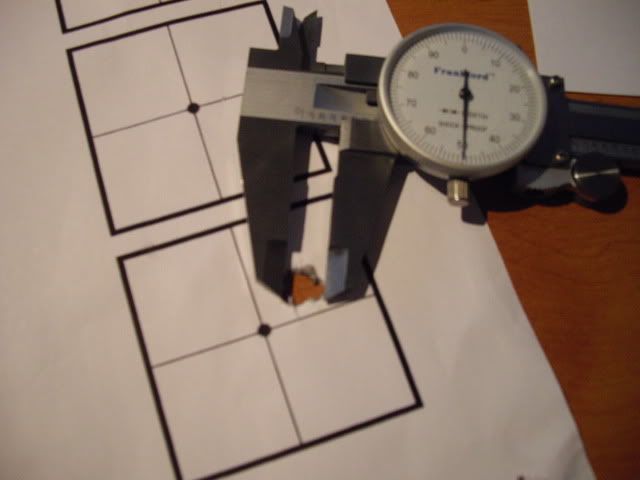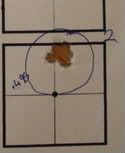Actually you can start reloading for a very small initial outlay. When I was a poor college student, I started reloading for my deer rifle with a Lee Loader and a beam scale.Priyan wrote:Very informative post but I still think reloading 9mm would be cost effective if one shoots a ton of ammo. Considering the initial cost of $1000 to $10,000 depending on the equipment time and efforts needed. I think it would be cost effective for frequent shooters like you but for occasional shooters reloading 9mm won't be cost effective but for big game hunters and .50BMG rifle owners it would be very cost effective.
BTW customizing ammo for different uses seems nice. I guess I'd start handloading if I ever manage to get into the holy place named United States of America
Is there any cookbook which defines how much powder to use, what should be the length of the cartridge after reloading etc. or one have to learn it by trail and error? If there's any source for this, I'd really appreciate it if you link me to them
Oh, another question. Is there any limit on on how much ammo one can own in USA. I mean will the ATF pay me a visit if I buy like 1,00000 ammo at once to get some discount.

At that time a Lee loader cost $19.99 and the beam scale cost another $20 or so. Powder, Bullets and Primers were next. I dont think my whole outlay was over $60.
It is slow and tedious but for a deer rifle, it is more than adequate. You can make about 1 round every couple of minutes. Less if you use their included powder measure.
You can still buy the Lee Loader and it did make decent, accurate ammo for my rifle. Its about $35 nowadays.
You can also look at some thing like Lee's Breech Lock Hand Press for about $60. Dies would be extra (Lee 9mm dies are about $40-$50 retail, depending on caliber).

Today there are starter kits available for a low price. Lee has their anniversary kit for $99.99.

RCBS has the partner press kit for $175, etc. Lyman and Hornady also have starter kits and sell single stage presses. All the other manufacturers have some kind of starter kit and/or a single stage press.
Most people start with a single stage press of some kind and once they get into it and build confidence in themselves, many will get a progressive. It just depends on how much you shoot. If you shoot a lot of pistol, you will probably want a progressive, where every pull of the handle will give you one cartridge.
So say that you, Priyan, are going to start reloading and you don't want to spend a ton of money, you might start with something like this:
Hardware costs ($ 159.97)
Anniversary Press kit from Lee for $99.99
You add a set of Lee deluxe 9mm dies for $39.99 (4 dies)
Kinetic Bullet Puller for $19.99
Consumables. ($ 94.99)
1 lb of powder for $19.99
1000 primers for $30.00
500 bullets for $45.00 (9mm, 115 Grain plated hollow points)
So you are looking at $250 to get started with one caliber. Subsequent calibers are just the cost of the dies themselves and the consumables. Sometimes you can share consumables between calibers. For example, I use the same powder and primers for 9mm and .40 S&W but usually you will use different powder for rifles and pistols. You could spend more and you could spend less. There are individuals who produce a few dozen bullets a year to commercial operations that produce thousands of rounds a day. Just depends on what you want to do.
Go to this site HERE and put in your costs.

In this instance, if you shoot just one 50 round box a week, you will pay for your reloader in about 6 months. If you shoot 100 rounds a week (very easy to do this), you will pay for your reloader in three months. After that any savings are gravy.
So you can start saving up for your next press, or just shoot more on the same budget, whatever. That is for 9mm, which is pretty cheap. For other calibers the savings can be much greater. Cheap (Winchester White Box) .357 Magnum ammo can be $30 a box.
Most people find that they don't really save money, they just end up shooting more.
As far as load data goes:Is there any cookbook which defines how much powder to use, what should be the length of the cartridge after reloading etc. or one have to learn it by trail and error? If there's any source for this, I'd really appreciate it if you link me to them
All the major powder manufacturers print load data for their powders. Here are the sites of some of the major powder manufacturers:
Alliant
Hodgdon
Accurate
Vihtavuori (Lapua)
In addition manufacturers who make reloading equipment also publish manuals (usually annually) that are avaulable in most places that sell reloading equipment
Hornady
Lee
RCBS
Lyman
Dillon
If you are a law abiding citizen, legally allowed to possess firearms, I am not aware of any law that restricts ammo by quantity but there are some laws regarding storage and transport of explosives.Oh, another question. Is there any limit on on how much ammo one can own in USA. I mean will the ATF pay me a visit if I buy like 1,00000 ammo at once to get some discount.
After you have so much in one place, you have to follow specific procedures for safe storage.











